Renaissance: Difference between revisions
Revert to revision 87268319 dated 2006-11-12 03:43:21 by AntiVandalBot using popups |
|||
| Line 19: | Line 19: | ||
===Critical views=== |
===Critical views=== |
||
[[Giorgio Vasari]] was the first to coin the term ''Renaissance'', in his book ''Vite'' (1550), though an awareness of the ongoing rebirth in the arts had been in the air from the time of [[Leone Battista Alberti|Alberti]]. Since the publishing of ''Vite'', historians have differed in their interpretations of the |
[[Giorgio Vasari]] was the first to coin the term ''Renaissance'', in his book ''Vite'' (1550), though an awareness of the ongoing rebirth in the arts had been in the air from the time of [[Leone Battista Alberti|Alberti]]. Since the publishing of ''Vite'', historians have differed in their interpretations of the meaning of ''Renaissance''. Many historians now view the Renaissance as more of an intellectual and ideological change than a substantive one. [[Historical materialism|Marxist historians]], for example, hold the view that the changes in art, literature, and philosophy affected only a tiny minority of the very wealthy and powerful, leaving the lives of the great mass of the European population unchanged. |
||
Many historians now point out that most of the negative social factors popularly associated with the "medieval" period - poverty, ignorance, warfare, religious and political persecution, and so forth - seem to have actually worsened in this era which saw the rise of [[Machiavelli]], the Wars of Religion, the corrupt [[Borgia]] Popes, and the intensified witch-hunts of the 16th century. Many people who lived during the Renaissance did not view it as the "golden age" imagined by certain 19th century authors, but were concerned by these social maladies. Significantly, though, the artists, writers, and patrons involved in the cultural movements in question believed they were living in a new era that was a clean break from the Middle Ages. |
Many historians now point out that most of the negative social factors popularly associated with the "medieval" period - poverty, ignorance, warfare, religious and political persecution, and so forth - seem to have actually worsened in this era which saw the rise of [[Machiavelli]], the Wars of Religion, the corrupt [[Borgia]] Popes, and the intensified witch-hunts of the 16th century. Many people who lived during the Renaissance did not view it as the "golden age" imagined by certain 19th century authors, but were concerned by these social maladies. Significantly, though, the artists, writers, and patrons involved in the cultural movements in question believed they were living in a new era that was a clean break from the Middle Ages. |
||
Revision as of 23:53, 12 November 2006

In the traditional view, the Renaissance was understood as a historical age in Europe that followed the Middle Ages and preceded the Reformation, spanning roughly the 14th through the 16th century.
The Italian Renaissance of the 15th century represented a reconnection of the west with classical antiquity, the absorption of knowledge (particularly mathematics), a focus on the importance of living well in the present (Renaissance humanism), and an explosion of the dissemination of knowledge brought on by the advent of printing. In addition, the creation of new techniques in art, poetry, and architecture led in turn to a radical change in the style and substance of the arts and letters. The Italian Renaissance was often labeled as the beginning of the Modern Age, or the Early Modern.
Present day historians are skeptical about excessive claims for the modernity of the period and the common assumption that previous centuries were in some way "darker", viewing the Renaissance as a cultural program or movement based on humanism, arts, and the classics rather than an entire historical age.
Historiography
The term Renaissance (rebirth, Rinascimento in Italian), as used to indicate the flourishing of artistic and scientific activities beginning in Italy in the mid 1300s, first appears in the Vite, published in 1550 by Italian artist Giorgio Vasari. It is the French word for the Italian rinascita, used by French historian Jules Michelet, and expanded upon by Swiss historian Jacob Burckhardt (both in the 1860s). Rebirth refers to both a rediscovery of ancient classical texts and learning, and to the widespread revitalization of European culture resulting from the application of this classical knowledge in the arts and sciences. Thus Renaissance can refer to this rebirth of classical learning and knowledge or to the ensuing rebirth of European culture.
Multiple Renaissances

During the last quarter of the Twentieth century many scholars took the view that the Italian Renaissance was perhaps only one of many such movements. This is in large part due to the work of historians like Charles H. Haskins (1870–1937), who made a convincing case for a "Renaissance of the 12th century." Other historians have even argued for a "Carolingian Renaissance" in the eighth and ninth centuries, and still later for an "Ottonian Renaissance" in the tenth century. These concepts are now widely accepted by the scholarly community at large; as a result, the present trend among historians is to discuss each so-called renaissance in more particular terms, e.g., the Italian Renaissance, the English Renaissance, etc. This terminology is particularly useful because it eliminates the need for fitting "The Renaissance" into a chronology that previously held that it was preceded by the Middle Ages and followed by the Reformation, which many believe to be inaccurate. The entire period is now often replaced by the term "Early Modern". (See periodisation, lumpers and splitters)
Other periods of cultural rebirth have also been termed "renaissances", such as the Harlem Renaissance or the San Francisco Renaissance. These are not considered in this article, which will concentrate on the European Renaissance linking the Middle Ages to the Modern Age.
Critical views
Giorgio Vasari was the first to coin the term Renaissance, in his book Vite (1550), though an awareness of the ongoing rebirth in the arts had been in the air from the time of Alberti. Since the publishing of Vite, historians have differed in their interpretations of the meaning of Renaissance. Many historians now view the Renaissance as more of an intellectual and ideological change than a substantive one. Marxist historians, for example, hold the view that the changes in art, literature, and philosophy affected only a tiny minority of the very wealthy and powerful, leaving the lives of the great mass of the European population unchanged.
Many historians now point out that most of the negative social factors popularly associated with the "medieval" period - poverty, ignorance, warfare, religious and political persecution, and so forth - seem to have actually worsened in this era which saw the rise of Machiavelli, the Wars of Religion, the corrupt Borgia Popes, and the intensified witch-hunts of the 16th century. Many people who lived during the Renaissance did not view it as the "golden age" imagined by certain 19th century authors, but were concerned by these social maladies. Significantly, though, the artists, writers, and patrons involved in the cultural movements in question believed they were living in a new era that was a clean break from the Middle Ages.
Johan Huizinga (1872–1945) acknowledged the existence of the Renaissance but questioned whether it was a positive change. In his book The Waning of the Middle Ages, he argued that the Renaissance was a period of decline from the High Middle Ages, destroying much that was important. The Latin language, for instance, had evolved greatly from the classical period and was still a living language used in the church and elsewhere. The Renaissance obsession with classical purity halted its natural evolution and saw Latin revert to its classical form. Robert S. Lopez has contended that it was a period of deep economic recession. Meanwhile George Sarton and Lynn Thorndike have both argued that scientific progress was slowed.
Historians have begun to consider the word Renaissance as unnecessarily loaded, implying an unambiguously positive rebirth from the supposedly more primitive Middle Ages. Many historians now prefer to use the term "early modern" for this period, a more neutral term that highlights the period as a transitional one that led to the modern world.
Early Renaissance
The Renaissance has no set starting point or place; it happened gradually in different places at different times. Likewise, there is not a definite date or place marking the end of the Middle Ages. The start of the Renaissance is almost universally ascribed to Central Italy, however, especially the city of Florence. The poet Dante Alighieri (1265–1321) is often considered to be the first writer to embody the spirit of the Renaissance.
Petrarch (1304–1374) concluded that the height of human accomplishment had been reached in the Roman Empire and the subsequent ages were a period of social rot which he labeled the Dark Ages. He saw history as consisting of social, artistic and literary advancement, not as a series of religious events. Rebirth meant the rediscovery of ancient Roman and Greek Latin heritage through ancient manuscripts and the humanist method of learning. These new ideas from the past (called the "new learning" at the time) triggered the coming advancements in art, science and other areas.
Another candidate for the starting point of the Renaissance is the fall of Constantinople to the Turks in 1453. It was a turning point in warfare as cannon and gunpowder became central. In addition, Byzantine-Greek scholars fled west to Rome bringing renewed interest in the Greek and Roman heritage, and it perhaps represented the end of the old religious order in Europe.
Throughout the 15th century, artists studied the natural world in order to perfect their understanding of such subjects as anatomy and perspective. Among the many great artists of this period were Sandro Botticelli, Domenico Ghirlandaio, Paolo Uccello and Piero della Francesca. There was a related advancement of Gothic Art centered in Germany and the Netherlands, known as the Northern Renaissance. The Early Renaissance was succeeded by the mature High Renaissance around the year 1500.
Italian Renaissance
The development of the Italian Renaissance was intertwined with the intellectual movement known as Renaissance humanism and with the history of the fiercely independent and combative urban societies of the city-states of central and northern Italy in the 13th to 16th centuries. Florence, Italy can be considered the birthplace of the Renaissance for several reasons.
The first two or three decades of the 15th century saw the emergence of a rare cultural efflorescence, particularly in Florence. This 'Florentine Enlightenment' (Holmes) was a major achievement. It was a classical, classicizing culture which sought to live up to the republican ideals of Athens and Rome. Sculptors used Roman models and classical themes. This society had a new relationship with its classical past — it felt it owned it and revived it. Florentines felt akin to 1st century BC republican Rome. Rucellai wrote that he belonged to a great age; Leonardo Bruni's Panegyric to the City of Florence expresses similar sentiments. There was a genuine appreciation of the plastic arts—pagan idols and statuary—with nudity and expressions of human dignity. Painting took huge leaps forward from the works of Giotto through Fra Angelico, Masaccio, Masolino, Piero della Francesca, and many others.
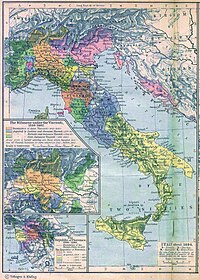
A similar, parallel movement was also occurring in the arts in the early 15th century in Florence—an avant-garde, classicising movement involving many of the same close community of people. Valla said that, as Latin was revived, so was Latin architecture — for example, the Palazzo Rucellai built by Leone Battista Alberti. Valla felt that Brunelleschi was the greatest architect since Roman times.
Sculpture was also revived, in many cases before the other arts. There was a very obvious classicism about contemporary sculpture, and highly true-to-life figures were being sculpted. Often biblically-themed sculpture and paintings included recognizable Florentines. Mention should be made of the competition to sculpt bas-relief bronze panels for the baptistery in Florence. The winner of the competition was Lorenzo Ghiberti, whose naturalistic and elegantly expressive work won over Brunelleschi's entry. Brunelleschi went on to give up sculpture and become one of the world's most significant architects, designing the Duomo of Florence.
The nascent philosophy of nominalism also played a part, and can be demonstrated by the attention to detail in the observation of nature evident in many paintings of the time.
Classicism was applied both to literature and art. Alberti felt that he had played a major part, as had Brunelleschi and Masaccio. The list of artists who contributed to the flowering of Italian art during this period is long and varied, and must also include Gentile de Fabriano, Fra Angelico, Lorenzo da Monaco, Fra Filippo Lippi, Masolino, and Giovanni di Paolo.
Causes
There are several possible explanations for the emergence of the Renaissance in Florence:
- The Medici family
- One of the oldest explanations is that patronage of the Medici allowed for the advancement of artwork, especially under Lorenzo, which in turn led to the Renaissance. However, the start of the Renaissance can be dated around 1410 to 1420, prior to the Medici's rise to power.
- The Great Man argument
- This theory argues that the existence of individual geniuses — Donatello, Brunelleschi, Leonardo da Vinci, and Michelangelo — sparked the Renaissance. This is often cited as a circular argument which fails to explain the circumstances which differentiated these particular geniuses from those before or after.
- The rise of individualism theory
- This is a similar argument that argues for a change from collective neutrality towards the lonely genius.
- The Black Plague theory
- In the 14th Century, it is estimated that up to one-third or more of the population of Europe died of the plague. The plague was indiscriminate; it affected kings and serfs, priests and peasants, the pious and the sinful. Neither fervent Christian beliefs, the payment of indulgences, confession, or anything else, provided protection from it. In this theory, this caused the Christian worldview to wobble very badly, and led people to think more about life rather than the afterlife. This, together with the invention of the printing press by Gutenberg (1450s) and the wide dissemination of humanistic philosophies from the Greco-Roman era - Aristotle in particular, but also Plato (and so Socrates), Epicurus, Cicero, Seneca and others - created the intellectual climate which both fostered the emergence of Humanism, the interest in man and the here and now.
Fourteenth century Italy
In 1300, Florence had a civic culture, with people like Latini who had a sense of classical values, though different from the values of the fifteenth century. Villani also had a sense of the city as daughter and creature of Rome.
The 1380s saw a gradual increase in the influence of several classicising groups, including monks and citizens. Apart from the elites there was already an audience for the Renaissance. Florence was a very literate audience, already self-conscious and aware of its city and place in the political landscape.
The crucial people in the fourteenth and fifteenth century were
- Manuel Chrysoloras: increased interest in the grammar of ancient architecture (1395)
- Niccoli: a major influence on the perception of the classics.
Their teachings reached the upper classes between 1410 and 1420 and it is argued that this is when the new consciousness emerged. Brucker noticed this new consciousness in council debates around 1410; there are increased classical references.
Florence experienced not just one but many crises; Milan, Lucca, the Ciompi. The sense of crisis was over by 1415 and there was a new confidence, a triumphant experience of being a republic.
Between the years 1413-1423 there was an economic boom. The upper class had the financial means to support scholarship. Gombrich says there was a sense of ratifying yourself to the ancient world, leading to a snobbishness and an elite view of education, and a tendency for the rich wanting to proclaim their ascendancy over the poor and over other cities.
The early Renaissance was an act of collaboration. Artisans and artists were enmeshed in the networks of their city. Committees were usually responsible for buildings. There were collaborations between patricians and artisans without which the Renaissance could not have occurred. Thus it makes sense to adopt a civic theory of the Renaissance rather than a great man theory.
The Renaissance Spreads
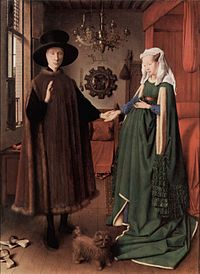
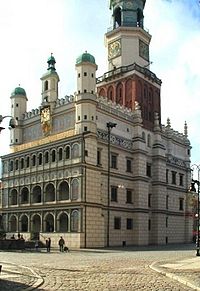
The Renaissance spread north out of Italy being adapted and modified as it moved. It arrived in France, imported by King Charles VIII after his invasion of Italy. Francis I imported Italian art and artists, including Leonardo Da Vinci and at great expense he built ornate palaces. Writers such as François Rabelais, Pierre de Ronsard, Joachim du Bellay and Michel de Montaigne, painters such as Jean Clouet and musicians such as Jean Mouton also borrowed from the spirit of the Italian Renaissance.
Italians brought the new style to Poland and Hungary in the second half of the 15th century. After the marriage of Matthias Corvinus, king of Hungary and Beatrix of Naples in 1476 Buda became the first important artistic centre of the Renaissance north of the Alps. The most important humanists living in Matthias' court were Antonio Bonfini and Janus Pannonius. The Ottoman conquest of Hungary in 1526 put an abrupt end to the short-lived Hungarian Renaissance.
An early Italian humanist, who came to Poland in the middle 15th century was Filip Callimachus. Many Italian artists came with Bona Sforza of Milano to Poland, when she married Zygmunt I of Poland in 1518. The Polish Renaissance is the most Italian-like branch of the Renaissance outside of Italy. This was supported by strengthened (at least temporarily) monarchies in both areas and supported by newly established universities.
From France the spirit of the age spread to the Low Countries and Germany, and finally to England, Scandinavia, and Central Europe by the late 16th century. In these areas humanism became closely linked to the turmoil of the Protestant Reformation and the art and writing of the German Renaissance frequently reflected this dispute.
In England, the Elizabethan era marked the beginning of the English Renaissance. It saw writers such as William Shakespeare, Christopher Marlowe, John Milton, and Edmund Spenser, as well as great artists, architects (such as Inigo Jones) and composers such as Thomas Tallis, John Taverner, and William Byrd.
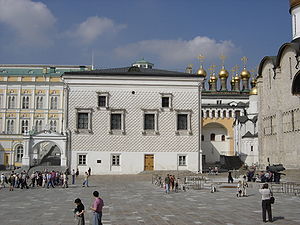
Early Renaissance arrived in the Iberian peninsula through the Mediterranean possessions of the Aragonese Crown and the city of Valencia. Early Iberian Renaissance writers include Ausiàs March, Joanot Martorell, Fernando de Rojas, Juan del Encina, Garcilaso de la Vega, Gil Vicente and Bernardim Ribeiro. Late Renaissance in Spain saw writers such as Miguel de Cervantes, Lope de Vega, Luis de Góngora and Tirso de Molina, artists such as El Greco and composers such as Tomás Luis de Victoria. In Portugal writers such as Sá de Miranda and Luís de Camões and artists such as Nuno Gonçalves appeared.
While Renaissance ideas were moving north from Italy, there was a simultaneous spread southward of innovation, particularly in music. The music of the 15th century Burgundian School defined the beginning of the Renaissance in that art; and the polyphony of the Netherlanders, as it moved with the musicians themselves into Italy, formed the core of what was the first true international style in music since the standardization of Gregorian Chant in the 9th century. The culmination of the Netherlandish school was in the music of the Italian composer, Palestrina. At the end of the 16th century Italy again became a center of musical innovation, with the development of the polychoral style of the Venetian School, which spread northward into Germany around 1600.
The paintings of the Italian Renaissance differed from those of the northern Renaissance in some ways. The Italian Renaissance did not only focus on religious figures but they also produced portraits of well-known figures of the day, and they also put religious figures in Greek or Roman backgrounds. During the Italian Renaissance, artists learned the rules of perspective which shows how far the object is by its size and made the paintings look three-dimensional. The artists also used shading to make objects look round and real. The Italian Renaissance artists studied human anatomy and drew from the models so it would be possible for them to sketch the human body more accurately than before. At first, northern Renaissance artists still focused on religious drawings, e.g. Albrecht Dürer who portrayed the religious upheaval of his age. Later on, Pieter Bruegel’s works influenced later artists to paint scenes of daily life rather than religious or classical themes. It was also during the northern Renaissance that Flemish brothers Hubert and Jan van Eyck perfected the oil painting technique, which enabled artists to produce strong colors and a hard surface that could survive for centuries.
See also
| Renaissance |
|---|
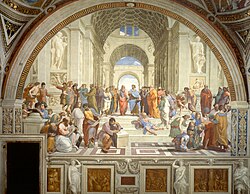 |
| Aspects |
| Regions |
| History and study |
- List of Renaissance figures
- Humanism
- Protestant Reformation
- Scientific Revolution
- Renaissance architecture
References
- Burckhardt, Jacob (1878), The Civilization of the Renaissance in Italy, trans S.G.C Middlemore, republished in 1990 ISBN 0-14-044534-X
- The Cambridge Modern History. Vol 1: The Renaissance (1902)
- Cronin, Vincent (1967), The Florentine Renaissance, ISBN 0-00-211262-0; (1969), The Flowering of the Renaissance, ISBN 0-7126-9884-1; (1992), The Renaissance, ISBN 0-00-215411-0
- Ergang, Robert (1967), The Renaissance, ISBN 0-442-02319-7
- Ferguson, Wallace K. (1962), Europe in Transition, 1300-1500, ISBN 0-04-940008-8
- Haskins, Charles Homer (1927), The Renaissance of the Twelfth Century, ISBN 0-674-76075-1
- Huizinga, Johan (1924), The Waning of the Middle Ages, republished in 1990 ISBN 0-14-013702-5
- Jensen, De Lamar (1992), Renaissance Europe, ISBN 0-395-88947-2
- Lopez, Robert S. (1952), Hard Times and Investment in Culture
- Thorndike, Lynn (1943) Renaissance or Prenaissance?'
Further reading
- Harold Bayley, A New Light on the Renaissance, 1909. (searchable facsimile at the University of Georgia Libraries; DjVu & layered PDF format)
External links
- Interactive Resources
- Lectures and Galleries
